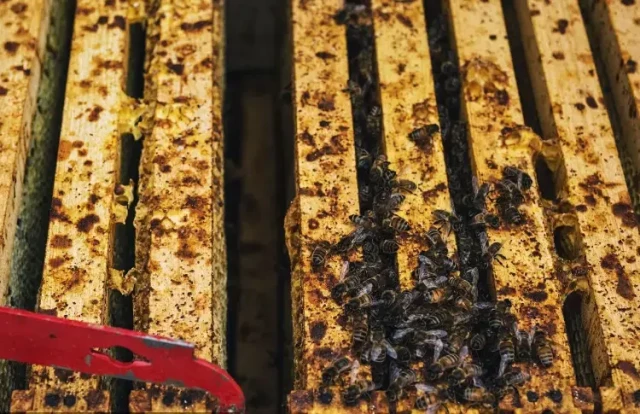Propolis—nature’s "bee glue"—is a prized resinous substance honeybees craft from plant buds. While it’s a valuable byproduct for beekeepers, improper harvesting can destabilize colonies. This guide reveals how to assess hive readiness and implement propolis traps responsibly, ensuring both productivity and bee welfare.
Propolis Trap Fundamentals
Defining Colony Strength: Metrics for a "Thriving" Hive
A robust colony is the foundation of sustainable propolis harvesting. Key indicators include:
- Population Density: Strong hives typically house tens of thousands of worker bees. Look for frames densely covered in bees, with minimal gaps.
- Brood Pattern: Healthy colonies exhibit solid, concentric brood patterns (no "shotgun" gaps).
- Propolis Activity: Bees actively depositing resin in hive cracks signal surplus resources.
Research shows: Bees use propolis as a biological shield—sealing gaps, reinforcing combs, and even embalming intruders to prevent decay. A thriving colony produces excess propolis naturally.
Balancing Productivity: Workload Thresholds
Propolis collection should never compromise core hive functions. Follow these guidelines:
- Prioritize Core Tasks: Ensure bees aren’t diverting excess labor from brood care or foraging.
- Trap Placement: Install traps above the brood chamber (bees prioritize sealing upper gaps first).
- Harvest Frequency: Limit harvesting to every few weeks during peak seasons (spring/summer).
Risk Management and Best Practices
Signs of Colony Overload and Mitigation Strategies
Stress symptoms demand immediate action:
- Reduced Foraging: Fewer bees returning with pollen/nectar may indicate overwork.
- Aggressive Sealing: Bees frantically plugging every gap (even traps) suggest environmental stress (e.g., pests, drafts).
Solutions:
- Pause harvesting if brood health declines.
- Provide supplemental feeding (sugar syrup) during dearth periods.
Seasonal Timing and Trap Configuration Tips
- Spring/Summer: Ideal for harvesting; warm temperatures soften propolis for easier collection.
- Trap Design: Use coarse-textured traps (e.g., plastic grids) to mimic tree bark, encouraging resin deposition.
Pro Tip: Rotate traps between hives to prevent overharvesting from a single colony.
Ready to Elevate Your Apiary’s Output?
HONESTBEE’s beekeeping supplies help commercial apiaries and distributors maximize yields sustainably. Explore our wholesale-focused propolis traps and hive tools—designed for efficiency without compromising bee health.
Because thriving hives mean thriving businesses.
Visual Guide

Related Products
- 2 Frame Stainless Steel Manual Honey Spinner Extractor for Beekeeping
- Stainless Steel 3 Frame Manual Honey Extractor Spinner for Bee Honey Extraction
- Plastic Hand Crank 2 Frame Honey Extractor Low Price
- HONESTBEE 3-Frame Manual Acrylic Honey Extractor
- 8-Frame Electric Self-Reversing Honey Extractor Spinner for Commercial Honey Extraction Equipment
Related Articles
- How to Choose the Right Honey Extraction Method for Your Beekeeping Needs
- Beyond the Harvest: The Critical Discipline of Cleaning Your Honey Extractor
- Tangential vs Radial Honey Extractors: How to Choose for Your Beekeeping Needs
- How to Harvest Honey Efficiently While Protecting Bee Health
- Ethical Honey Harvesting: Essential Tools and Techniques for Beekeepers




















